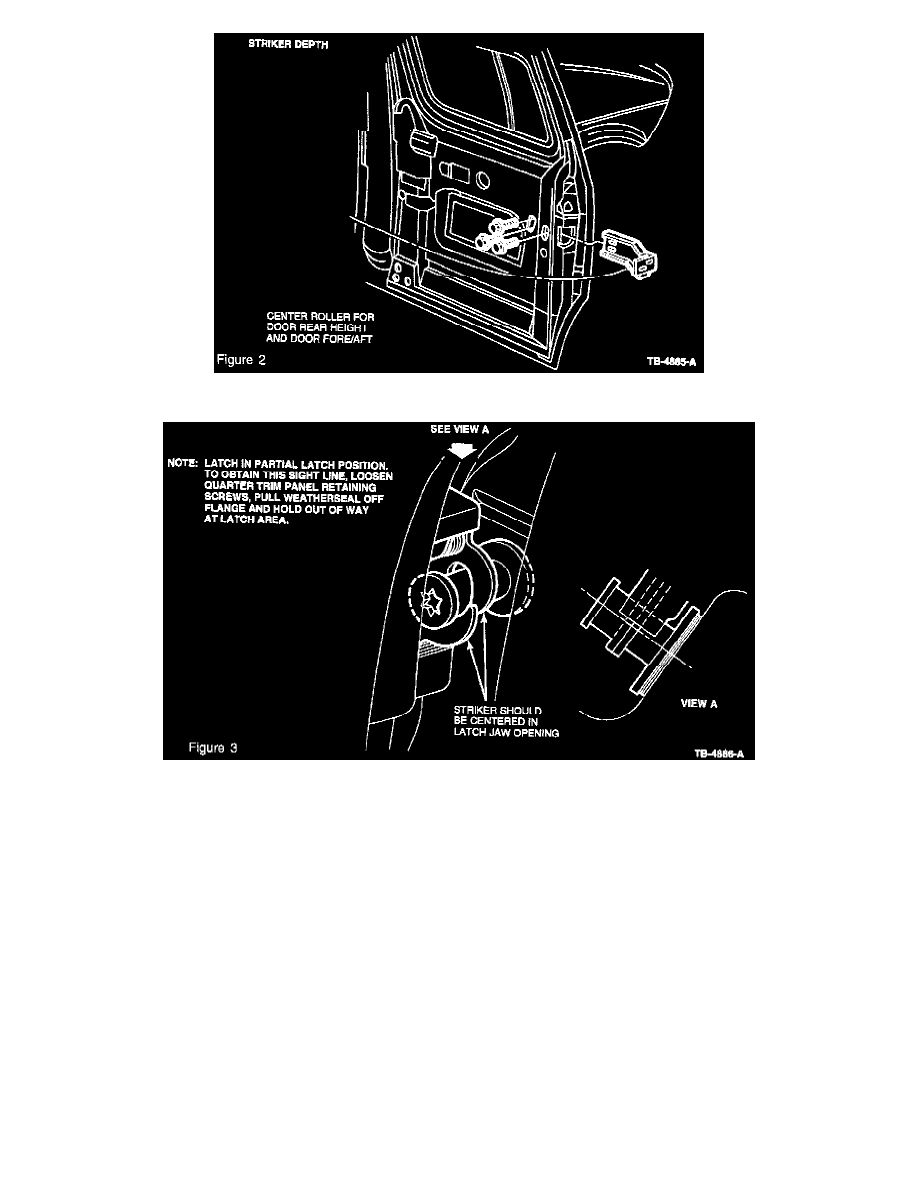Aerostar 2WD V6-182 3.0L (1995)

1.
Door height is adjusted by raising/lowering the center roller mechanism at the door. Refer to Figure 2.
2.
Inspect the latch and striker for proper engagement depth of the striker which is controlled by shims under the striker. The striker head should be
clear of the latch jaws and latch housing so no interference can occur. Remove or add shims as required. Refer to Figure 3.
3.
Inspect the latch and striker for proper up/down adjustment. Latch jaws should close cleanly around striker and not create up/down pressure on
door. Adjust the striker as necessary.
4.
Inspect door for flushness to body. The door should be flush to not more than 2 mm overflush at the striker area. Adjust the striker in/out as
required.
5.
Check door opening and closing efforts by operating the door several times. If efforts are high, adjust door reward 1 to 1.5 mm by adjusting the
center roller mechanism forward on the door. The margin between the rear of the door and body must be greater than 3 mm when done or the door
may strike body when closing. If center roller mechanism is adjusted, recheck striker engagement depth and flushness as center roller adjustments
will change these settings.
6.
Reinstall any interior trim previously removed.
LATCH MECHANISM DAMAGED
1.
Apply inward pressure at the rear of the door to reduce latch loads while a second person operates the inside and outside door handles. If the door
opens, refer to the "Adjustment" heading in this TSB article. If latch mechanism fails to release, continue with the following Steps 2-9.
